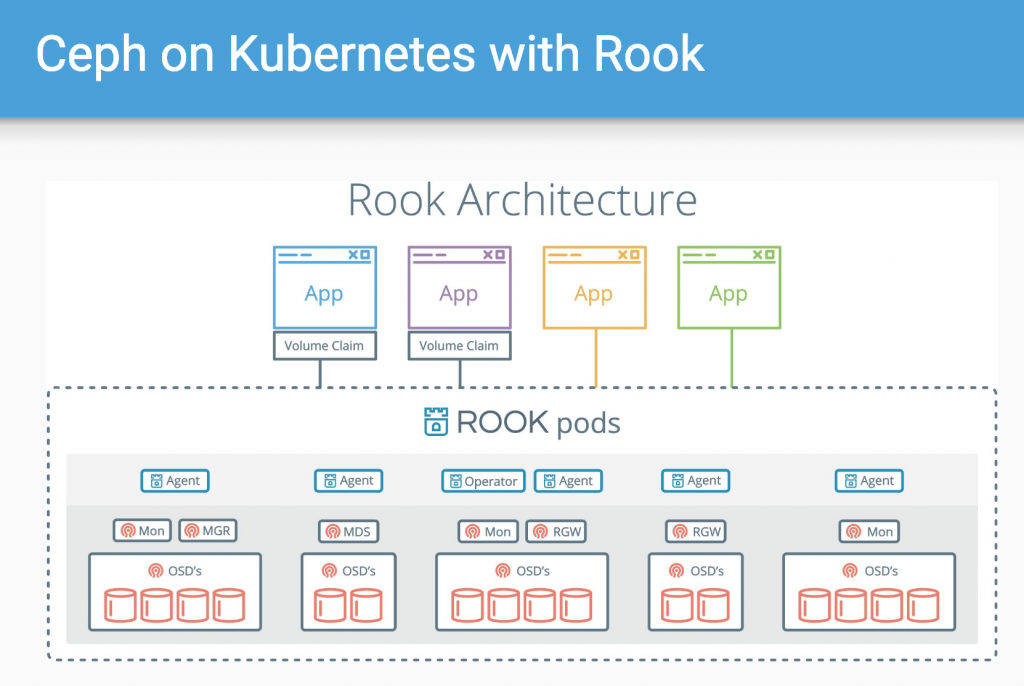Rook is an open-source cloud native storage orchestrator for Kubernetes that one of its maintainers, Alexander Trost, says is simple to use. (Presumably easier than mastering chess, from which the project takes its name.)
Trost, a dev-ops engineer at Cloudibility, gave a talk about using Rook at the recent Free Open Source Developers’ European Meeting (FOSDEM) that ran through the architecture and advantages of using Rook. (There are so many that he ran out of room for the demo, but you can get the demo files on GitHub.)
Why would you want to take up this project? With Rook, ops teams can run software distributed systems (SDS) (such as Ceph) on top of Kubernetes. Developers can then use that storage to dynamically create persistent volumes (PV) in Kubernetes to deploy applications, such as Jenkins, WordPress and any other app that requires state. Ceph is a popular open-source SDS that can provide many popular types of storage systems, such as object, block and file system and runs on top of commodity hardware. Rook, currently an incubating-level project of the CNCF, can also be used with other storage providers including CockroachDB, EdgeFS, Minio and Cassandra.
As for what Rook can help you do better with Ceph, Trost says the main benefits are health checks for MONs with automatic failover, simple management of Ceph clusters, pools, filesystem and RGW through Kubernetes objects as well as offering storage selection in one central place.
Learn more
To get started, you can take a look at the Quick Start Guides, at the GitHub repo, join the forum or the Slack channel. Take a look at the FOSDEM slides or view the 39-minute talk here.
At the upcoming Open Infrastructure Summit, there are two sessions dedicated to the project: “Rook: A new and easy way to run your Ceph storage on Kubernetes,” with Blaine Gardner a Rook-Ceph maintainer and software engineer at Suse Enterprise Storage and Dirk Müller, also at Suse, and “Storage 101: Rook and Ceph” with Red Hat’s Federico Lucifredi, Sean Cohen and Sébastien Han.
Cover photo // CC BY NC
- Exploring the Open Infrastructure Blueprint: Huawei Dual Engine - September 25, 2024
- Open Infrastructure Blueprint: Atmosphere Deep Dive - September 18, 2024
- Datacomm’s Success Story: Launching A New Data Center Seamlessly With FishOS - September 12, 2024

)











